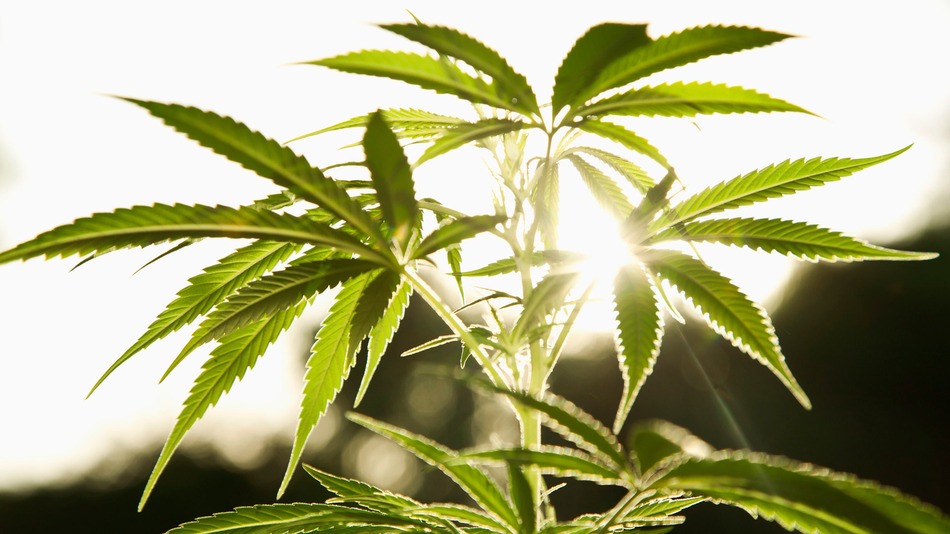
Search “marijuana” and “lollipop” on Google and you’ll find headlines that revolve around a case report published by two Canadian physicians published in the February 2019 issue of the Canadian Journal of Cardiology.
The report by Alexandra Saunders and Robert S. Stevenson was about a 70-year-old man, unidentified except for being a resident of St. John, New Brunswick, according to the National Post, with a known history of coronary artery disease who had suffered a heart attack after ingesting part of a 90-milligram marijuana lollipop.
Coronary artery disease is the most common type of heart disease and the leading cause of death in the United States. It’s caused by a buildup of cholesterol and other material called plaque. As the plaque builds up inside the artery walls, less blood gets through. As a result, less blood and oxygen reach the heart. Sometimes a blood clot can break free and block the flow of blood completely, causing permanent damage.
The patient, who had smoked some marijuana earlier in life, thought the lollipop would help the aches and pains of aging, the report stated. The lollipop contained 90 milligrams of THC, and he had consumed about 70 milligrams of it. Less than a half hour after consuming the edible, the man experienced the crushing chest pain associated with a heart attack.
Basics of Evidence-Based Medicine
Dr. Jeremy Boucher, an anesthesiologist in Oklahoma City, Oklahoma, who evaluates patients in search of an Oklahoma Medical Marijuana card, evaluated the case report to help contextualize the results.
“Here is a basic explanation of the medical ‘Levels of Evidence,’ that we assign to various publications,” Boucher wrote. “We arrange them in our heads hierarchically, and assign a value to the strength of the outcome based on how strong the level of evidence and the strength of the study design.”
In essence, the more evidence and more soundly designed the study, the more credibility researchers apply to the study’s results. These practices are the foundation of evidence-based medicine (EBM). In EBM, the strongest, most sound research includes randomized controlled trials or extensive meta-analysis. Doctors make clinical decisions based on the strength of the available evidence.
“As the name suggests, evidence-based medicine is about finding evidence and using that evidence to make clinical decisions,” wrote Patricia B. Burns, Dr. Rod J. Rohrich, and Dr. Kevin C. Chung in an article published in The Journal of the American Society of Plastic Surgeons.
EBM was first described by the Canadian Task Force on the Periodic Health Examination in 1979 and later expanded on by Dr. David Lawrence Sackett, a pioneer in the discipline. EBM gives the most importance to randomized controlled trials, and ranks case reports or expert opinions the lowest. While the case study of the 70-year-old man in Canada falls into the lowest level of evidence, that doesn’t mean the researchers have been misleading the public. It may simply mean there is little available research on the incident or the conversation on the topic is just beginning, Boucher explained.
“Case reports are only written if they are discussing something that has never, or virtually never, been discussed before, either because it is too rare to be seen, or something new is on the market: medication, device, cannabis, and they are beginning to look at it in relation to other things,” Dr. Boucher wrote.
So how does the story of one man’s heart attack result in warnings of “killer” edibles? It actually happens quite often. The National Institutes of Health published “Characteristics of Medical Research News Reported on Front Pages of Newspapers,” in 2009, examining 734 articles.
“Of 734 front-page medical research stories identified, 417 (57 percent) referred to mature research published in peer-reviewed journals,” the author concluded. “The remaining 317 (43 percent) stories referred to preliminary findings presented at scientific or press meetings.”
A Familiar Refrain: ‘More Research Needed’
Cannabis research that passes EBM’s highest benchmark is in short supply in the United States due to federal rules about researching Schedule I substances. Even when researchers are able to get approval to research cannabis, they must contend with a subpar sample product and other bureaucratic barriers that make studying the plant difficult.
The federal government controls the supply of cannabis for research in the United States. Further, there’s a catch-22 with respect to getting research approved. Currently, the Drug Enforcement Administration (DEA) says marijuana has no accepted medical use and a high potential for abuse, classifying it under Schedule I of the Federal Controlled Substances Act. The Food and Drug Administration (FDA) must also sign off on medical cannabis research, and they have cited a lack of research showing that marijuana is medically effective. Thus far, only one FDA-approved clinical trial has been conducted on cannabis.
The authors of the case report called for more research, and most everyone agrees much more is needed. Only once researchers get studies approved and overcome other obstacles like obtaining proper supplies of research cannabis, can people begin to get medically validated answers to their medical cannabis questions.















